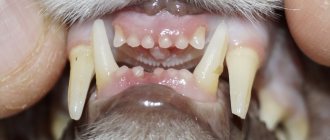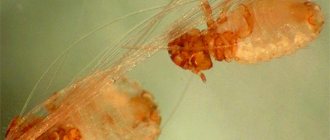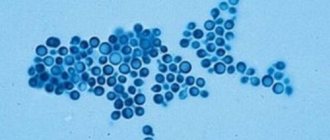Every cat experiences a skin disease at least once in its life. This problem applies to both street cats, which are easy targets for any infection, and homebodies who have almost no communication with their own kind. Skin diseases in cats cause damage not only to the health of the pet itself, but also pose a certain danger to humans. Therefore, it is necessary to know which of them are the most common. When the first symptoms appear in an animal, you should immediately contact a veterinarian. Fortunately, almost all non-advanced skin infections respond well to treatment and have a favorable prognosis.
Parasitic infections
Diseases caused by parasitic infestation may be:
- flea infestation;
- fungal (ringworm);
- mites (scabies, demodectic mange, otodectic mange, cheyletiosis, sarcoptic mange, notoedrosis).
Flea infestation
Flea infestation is a fairly common skin disease. If the parasites are not removed, it can be complicated by flea dermatitis, which is of an allergic nature. The main symptom of the disease is severe itching throughout the body. Parasites and their excrement can be seen with the naked eye if you part the cat's fur. The disease occurs through contact of healthy animals with sick ones, as well as simply being in a room where there are fleas. The owner can bring the eggs of the larvae into the house on his shoes after returning from the street.
Feeding on the blood of their victim, the parasites bite through the skin, releasing saliva into the wound, which thins the blood. This is what causes severe skin itching. The animal constantly scratches the bite site, damaging the skin, causing infection and provoking an inflammatory process.
Flea infestation is one of the few skin diseases that can be treated on your own without seeing a doctor.
You should know that fleas do not live on the skin of an animal, but only feed. The entire main process of life activity and reproduction occurs in secluded places in the apartment - in the fibers of the carpet, under the bed or in the crevices of the baseboards. This must be taken into account when implementing therapeutic measures. Therefore, treatment should include the following:
- animal processing;
- room treatment.
Treatment is carried out with drugs (insecticides) in several stages. Both adults and their eggs must be completely destroyed. Such treatments must be repeated at intervals of several months.
Fungal infections
Of the diseases of fungal etiology, ringworm is the most common.
Ringworm is a fungal disease that can be transmitted to humans. A cat becomes infected through contact with a sick animal. Fungal spores can be carried into the home on shoes or clothing. Microsporia is characterized by a very high speed of spread, gradually involving more and more new areas of the animal’s body in the process. Its main symptoms are:
- rounded areas of lost hair are localized on the cat’s head, paws and back;
- the affected skin is irritated and has an uneven scaly surface.
For treatment to be successful, it is important to start it early. A small area of damage is much easier to completely cure. The localization site is disinfected using antiseptics, after which an antifungal ointment is applied. The treatment is quite long. In more severe cases, antibiotic therapy is additionally administered.
Tick-borne infections
Tick-borne infections affecting cats are important to identify. After all, each of them has its own treatment regimen.
Scabies
Scabies is a mite-borne infection of the skin of animals. Its culprits are microscopic scabies mites. They are present on the skin of animals at any time, but are activated only when the body’s resistance drops for various reasons. Scabies is contagious to other animals and humans.
Demodicosis
Demodicosis is a dangerous tick-borne infection. The risk of infection occurs during the warm season - the period when these insects are active. Its symptoms are quite painful, since the disease covers large areas of the skin. By parasitizing under the skin of their prey, demodectic mites cause hair loss, redness of the affected areas, and pustular inflammation of the skin. The main therapy consists of prescribing antiparasitic drugs.
Otodectosis
The cause of otodectosis often lies in insufficient care of animals. Dirt and accumulation of wax in the ear canals become a breeding ground for the reproduction and activity of ear mites. The behavior of a cat when infected is very characteristic. She constantly shakes her head and suffers from itchy ears. The clinical picture is complemented by unpleasantly smelling dark crusts in the ears. If treatment measures are not taken, the condition becomes more serious. The inflammatory process, progressing, involves the eardrum. A possible outcome of the disease is hearing loss and damage to the meninges - meningitis.
The disease is treated with antiparasitic ear drops (Otovedin, Surolan, Otibiovin). The inflammatory reaction is well relieved by local ointments (“Sulfur ointment”, “Colloidal sulfur”).
Cheyletiosis
Cheyletiosis or “wandering dandruff” is caused in a cat by a special type of microscopic mite that affects the skin of the back along the spinal line. The disease can be recognized by its characteristic behavior. Experiencing severe itching, she rolls on the floor, trying to relieve it. The disease is treated with special injection drugs (“Pyrethrin”, “Fipronil”) and antiseborrheic shampoos. To increase the effectiveness of the drugs, long hair must be cut.
Sarcoptic mange
Sarcoptic mange is also a tick-borne infection that can occur in both cats and dogs. It causes symptoms similar to those of scabies. Ticks of this type can also infect human skin. The disease gradually goes away on its own, because the mite does not have the ability to reproduce in human skin. The drug "Stronghold" is well suited for the treatment of this disease. It is produced in drops, which are applied to the withers of the animal.
Notoedrosis
Another parasitic disease caused by the subcutaneous mite is called notoedrosis. Its causative agent is the microscopic subcutaneous mite Notoedres cati. The parasite lives in the skin of the animal's head and neck, gnawing passages in them, and thereby causing severe itching. The disease can be complicated by purulent dermatitis. The symptoms of the disease are very similar to the symptoms of demodicosis, so the final diagnosis is made based on microscopic examination of scrapings from the affected areas.
Treatment is carried out with anti-tick drugs (“Amitrazine”, “Sulfur ointment”, “Amit”).
Prevention
In order for the animal to be healthy, it is necessary to constantly carry out preventive measures. These include:
- Timely and regular examinations of the pet at the veterinary clinic.
- Regular treatment for parasites and helminths.
- A varied, complete and balanced diet.
- Compliance with sanitary and hygienic standards.
- Timely vaccination of the animal.
If any of the above symptoms occur, it is important to immediately seek qualified veterinary help.
Skin diseases in cats can occur as a result of an incorrect and inadequate diet or inappropriate living conditions, various injuries or damage to the skin. It is important to follow all preventive measures and regularly check the animal with a veterinarian. Some vaccines will help prevent skin lesions in animals.
Allergic reactions
Quite often, cats experience allergic reactions of various origins. The most common are household, food and drug allergies. It manifests itself most often in the form of dermatitis. In localized areas, the fur usually thins out or falls out completely, and itchy areas appear, which causes great discomfort to the animal. The symptoms and treatment of various forms of allergic reactions are usually the same. In most cases, antihistamines are prescribed. But the most important thing is to identify which substance is the allergen and eliminate it.
Atopic dermatitis
Atopic dermatitis is a disease of an allergic nature. Usually caused by various external factors - dust, detergents, pollen. Its signs are progressive baldness in the neck, ears, abdomen or between the thighs, irritation and ulcers on the skin, itching.
The disease is treated with broad-spectrum antimicrobials and antihistamines.
Miliary dermatitis
Miliary dermatitis, in most cases, is also of an allergic nature, although it can occur as a result of bacterial, fungal infection, helminth infection, hormonal or autoimmune disorders.
It can be recognized by a finely nodular itchy rash and active hair loss in areas where the skin is affected.
The diagnosis and cause of the disease are determined during a comprehensive examination: scrapings are taken from the surface of the skin, and a laboratory analysis of the hair is performed. If this is not enough, the doctor may prescribe a skin biopsy.
Treatment is prescribed based on the results of the diagnosis. The cause of the pathological reaction of the body is eliminated and supportive therapy is prescribed.
Feed intolerance
A food allergy can occur when a pet is switched to a different diet. This form of the disease is characterized by both skin and gastric manifestations - urticaria, nausea, vomiting, loose stools. Sometimes there are symptoms of eosinophilic granuloma - nodular formations in the lips and mouth. If no measures are taken, anaphylactic shock may develop.
The cat has small sores all over her body: Acne in cats?
There is another relatively harmless cause of small sores on the body, most often on the chin - acne. Yes, yes, acne not only torments teenagers, but also interferes with the lives of our four-legged friends.
Acne are small black spots on a cat's chin. There are many myths associated with them. The main thing is that it comes from low-quality plastic bowls. But this is absolutely not true. Bowls have nothing to do with this problem.
If the owner notices black spots on the cat's chin, then it is necessary to visit a veterinary dermatologist to make sure that the cat does not have fungus or flea dermatitis.
Next, you should purchase a bandage and salicylic alcohol at a regular human pharmacy and wipe the cat’s chin several times a day with a bandage soaked in salicylic alcohol.
You also need to pay attention to the cat's diet. Most likely, he is very fatty for an animal. This is precisely why this problem appears.
Call the doctor
Bacterial infection
Skin diseases caused by bacterial infections have two forms of development - dry (with the formation of dry scales and crusts) and wet (ulcers and blisters filled with exudate).
Bedsores
If an animal has suffered a serious illness or a complex surgical operation, the recovery period usually requires immobility, which is fraught with bedsores. They are formed at the site of prolonged contact of the body with the litter tissue. To prevent bedsores, the cat requires careful care - frequent turning over, treating places where there is a risk of bedsores with disinfectants and camphor alcohol.
Eczema
Animals with hypersensitive skin are at higher risk of developing eczema. The etiology of the disease can be different:
- Traumatic damage as a result of prolonged exposure to the skin (friction, scratching from bites, burns).
- Neuropathy is a consequence of various internal disorders (systemic diseases, diabetes, hormonal disorders).
- Physical and chemical damage. In this case, the disease is provoked by chemical burns or irritating substances affecting the skin.
The disease begins with itchy rashes and blisters on the skin, and local fever. Subsequently, the lesions dry out, leaving flaky areas or, conversely, degenerate into a festering, weeping wound.
Treatment is long-term and includes the prescription of local medications in the form of soothing ointments and powders, and antibiotic therapy.
Acne
The cause of acne (blackheads) is usually low immunity, improper care and stress of the animal. This is a bacterial infection that affects the sebaceous glands. You can recognize it by pustular rashes all over the body. Acne is most often localized on the chin and around the lips.
Depending on the severity of the lesion, local or general therapy is used.
First of all, the skin is treated with antiseptic detergents:
- tar soap and shampoo;
- antiseborrheic shampoos.
Then local antiseptics are applied:
- "Chlorhexidine";
- "Miramistin";
- hydrogen peroxide.
In especially severe cases, the doctor prescribes topical antibiotics (Mupirocin) or corticosteroids (Prednisolone).
The cat has sores on her body: Demodectic mange
Another common cause of body sores in cats is demodicosis. This is a tick, called subcutaneous because of its location. Demodex, which is the name of the causative agent of this disease, affects all cats and dogs, regardless of age and breed.
Modern veterinarians believe that demodex activity is caused by:
- weakened immunity (due to recent illnesses, chronic and congenital changes and diseases);
- poor quality maintenance (untimely cleaning of the tray, dirty house and bedding, dampness in the room, dirt);
- unbalanced diet (lack of fat and vitamin A in the diet).
Alarm clock cat. How to wean your pet from the habit of waking up? Pet harm is treatable! The best lifehacks are here:
Diagnosis and treatment of demodicosis:
First of all, the cat's fur loses its shine and becomes brittle, the skin around the eyes is affected, it turns red, begins to peel, and dandruff appears. Next, dandruff and flaking become coarser and crusty.
The cat develops scabs all over its body, which become rougher over time, begin to burst and secondary infections join them, and ulcers may appear. From this moment on, the animal may begin to itch, but itching is not a mandatory sign of demodicosis.
To make a correct diagnosis, a mandatory visit to a veterinary dermatologist is required, who will scrape and pluck the hairs from the cat. After examining them under a microscope and confirming the diagnosis, treatment will be prescribed.
In dogs, this disease is treated with the Bravecto tablet. For cats there are Bravecto Spot-On drops . Using them three times according to a specific schedule completely and safely rids the cat of uninvited guests.
Skin diseases of other etiologies
Skin diseases in domestic cats may be a consequence of loss of psychological balance, hormonal imbalance or some other imbalance in the body.
Psychogenic alopecia
The diagnosis of “psychogenic alopecia” is made to an animal when there is rapid hair loss. This condition is caused by prolonged stress or neurosis, which can occur:
- when changing place of residence or owner;
- when another cat or a new family member appears;
- after being alone for a long time.
First of all, the groin area, stomach, sides, and center line of the back lose hair. The exposed skin shows no signs of inflammation. Sedatives and antidepressants help relieve this condition:
- "Cat Baiyun";
- "Stop stress";
- "Amitriptyline."
More emotional breeds of cats are susceptible to the disease - Siamese, Abyssinian, Himalayan.
Cushing's syndrome
Hormonal imbalance in the body can provoke a very rare disorder - Cushing's syndrome. It is caused by excessive production of the animal hormone cortisone by the adrenal glands. Its main symptoms are:
- hair loss;
- behavioral changes (sudden aggression);
- increasing weakness;
- increased appetite and thirst.
The disease can be provoked by uncontrolled use of hormonal drugs. Conservative and surgical methods are used for treatment:
- the drug "Trilostane", which suppresses the production of hydrocortisone;
- if the symptoms are caused by a pituitary tumor, it is removed surgically.
Severe disease may require surgical removal of the adrenal glands, in which case the animal will be required to undergo hormone replacement therapy throughout its life.
Symptoms and types
Symptoms will depend on the underlying cause.
However, they may include one or more of the following:
- Alopecia
- Erosions or ulcers that can occur on any part of the body.
- Single or multiple lesions that may become inflamed (indicated by redness and swelling).
- Lesions over pressure points (where the skin is closest to the bone)
- Dried discharge on the surface of the skin lesion (crust); or there may be a wet discharge oozing from the lesion
- Depigmentation on the skin and/or hair
General rules for the treatment of skin diseases
Cats have sensitive skin, which makes them susceptible to epidermal diseases more than other animals. The situation is complicated by the fact that many of them like to walk on their own, so their social circle cannot be limited in any way.
A sick cat requires careful care. Parasitic infections are contagious and take quite a long time to treat, so the cat needs to be isolated from other animals and people. When communicating with her, you must be careful, but do not make her an outcast in the family. This is especially true for kittens, because they really need the affection and attention of their owner.
It is very important to carefully follow all doctor’s orders and bring the animal to the clinic at certain intervals to monitor the dynamics of the disease.
Modern veterinary medicine has a rich range of medicines that can cope with almost any skin infection. If you do not miss the disease at the initial stage of its development, then it will not be difficult to cure it.
The cat has scabs on its body: Preface
As a rule, domestic cats, like wild cats, live on their own and do not particularly like it when their owners invade their lives and personal space. The owner’s task is to feed and clean the litter box, but this is only in the opinion of the cats themselves.
In fact, owners are always concerned about the health of their cats. But spotting skin problems is more difficult than in dogs. Cats, unlike dogs, are not washed every day after a walk, and are brushed only during the period of shedding and long-haired pets.
Therefore, dermatological problems in cats are most often noticed in an advanced form. We will talk further about why a cat has scabs on its body.
Watch the video: Is your cat itching? Causes of itching - advice from a veterinarian
Viruses
Skin ailments and dermal irritation in cats caused by exposure to various viruses are rare. Pathological skin conditions occur against the background of herpes virus infection, calcivirosis, and feline leukemia. In addition to the appearance of lesions, small ruptures of the mucous membranes are noted.
Antibiotics, antiviral drugs, immunomodulators, and symptomatic agents are used in treatment to eliminate the main symptoms. Treatment of viral diseases requires long-term treatment, and in some cases the cat is prescribed lifelong maintenance therapy.
Ear mite
The ear mite Otodectes parasitizes in the ear canals of an animal, often due to improper care. The disease is manifested by severe itching, scratching, unpleasant odor from the ears and dark gray discharge. The skin in the affected areas turns red, the body temperature rises, the animal constantly shakes its head and scratches its ears. Because of the unbearable itching, cats can scratch huge wounds behind their ears.
The progression of the disease is fraught with inflammation of the outer ear, which can spread to the middle ear, which in turn is dangerous for imbalance. In such a situation, the animal will constantly keep its head to one side. Sometimes the infection reaches the parotid space, causing severe inflammation.
Treatment of ear mites includes systematic cleansing of the ear canals and the use of acaricidal drops.
Learn more about the common condition of feline ear mites.
Care
Follow-up will be done on an individual basis and will depend on the disease process, the presence of general (systemic) diseases, medications used to treat the skin and body, and possible side effects that can be expected. from medications.
Follow-up with a veterinarian is important, especially for slow-healing ulcers; The progress of the wound should be monitored at least every two weeks to ensure that healing is progressing properly and that infection is not complicating the healing process.
Ringworm
Ringworm is an infectious fungal pathology that often affects young animals with reduced immunity, as well as cats that have suffered from cancer or viral diseases.
The cause of the disease is fungal spores, which can be carried on clothes or shoes. Infection occurs through contact with a sick animal, through shared toys, feeding and care items.
Clinical signs of ringworm are:
- bald areas on the head, tail and limbs;
- in the center of the affected area, the skin turns red and peels, sometimes ulcers, white scales and crusts appear.
Treatment of the disease is carried out using antifungal ointments and antiseptic solutions. In severe cases, antibiotics, vaccines and oral antifungal medications are prescribed.
Read a full review of ringworm disease in cats.
Causes
Common causes of skin ulcers and erosions include burns, trauma and skin infections, as well as more complex conditions such as drug reactions, some types of cancer and autoimmune skin diseases.
A wide variety of conditions can lead to skin erosions or ulcers. Viruses can also cause erosions or ulcers and may appear identical to burns or injuries.
Your veterinarian may need to perform a number of tests, including blood tests, cultures for various types of infections, and skin biopsies, to determine the underlying cause of the reaction and provide appropriate treatment.
In some cases, the root cause cannot be determined. If so, your veterinarian will diagnose it as an idiopathic disorder or disease.











